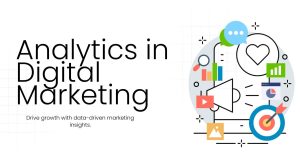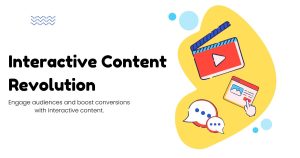Unlocking the Benefits of Emotional Marketing for Your Brand

Marketers have long understood the power of connecting with consumers emotionally. Beyond facts and figures, emotional connections influence purchasing decisions, increase brand loyalty, and leave lasting impressions. But what exactly is emotional marketing, and how can your business use it effectively to drive results?
This guide explores the art and science behind emotional marketing, explaining its psychology, highlighting key emotions to target, and offering examples and strategies to help you implement it successfully. By the end, you’ll have a roadmap to harness the power of emotions to elevate your marketing campaigns.
What is Emotional Marketing
Emotional marketing is the art of creating messages, visuals, and campaigns that appeals to emotion inside your audience. Ultimately, the agenda is uncomplicated—to generate a lasting emotional response to the brand and to be remembered. Whether it’s happiness, childhood memories, terror, or even a touch of heartache, emotional marketing elicits emotional responses that ring truer than just trying to convince people to buy a product or service.
Look at something like Coca-Cola’s classic “Share a Coke” campaign. When they printed the names on bottles, they hit on the human emotion of ownership and sharing moments with friends – a much sexier concept than just flaunting the taste of your soda.
To maximize these benefits, it’s crucial to explore how emotions affect consumer behavior in buying decisions.
The Psychology Behind Emotional Marketing
To grasp why emotional marketing is so effective, one must delve into consumer behavior and psychology. Studies show that people decide emotionally and justify with rationality. Emotional triggers ignite brain’s decision-making centers, giving feelings more power than logic in the purchase decision.
For example, research frm Harvard Business School professor Gerald Zaltman found that 95 percent of purchase decisions are subconscious, with emotions largely powering those decisions. However, an emotionally appealing campaign sears the brand into the consumer’s mind more than just data or product attributes.
This effectiveness of emotions is exactly why brands prioritize stories that inspire, visually gripping material, and messages that touch our hearts.
Key Emotions to Target in Marketing Campaigns
Different emotions can trigger different consumer reactions, so it’s essential to choose the right ones based on your audience and campaign goals. Here are some key emotions commonly leveraged in emotional marketing campaigns and what they achieve:
1. Joy
Joy drives shareability. When people experience happiness from your content, they’re more likely to talk about your brand and share the experience with others. Campaigns that promote positive experiences, humor, or uplifting moments often go viral.
2. Nostalgia
Nostalgia sparks a connection by reminding people of the “good old days.” Whether it’s a throwback ad featuring retro themes or bringing back a discontinued product, nostalgia creates a powerful link between emotion and memory.
3. Trust
Trust is critical, especially for more serious industries like finance and healthcare. Showcasing testimonials, authentic reviews, or certifications can tap into emotions of reliability, calming customers’ concerns.
4. Fear and Urgency
Fear-based marketing appeals to pain points or the fear of missing out (FOMO). Phrases like “only 2 left in stock” or campaigns that highlight problems solved by a product (e.g., insurance ads) compel consumers to act quickly.
5. Belonging
Community-driven campaigns make people feel connected to a larger group or movement. Sharing common values or pursuing higher causes, such as sustainability, often brings customers closer to your brand.
Inspiring Examples of Emotional Marketing in Action
Great campaigns demonstrate the tactical use of emotional marketing. Here are several iconic examples that achieved impact through emotional connections:
- Nike’s Just Do It.
Nike’s signature phrase is more than a tagline; it inspires motivation and perseverance. Their ads focus less on the product itself and more on empowering athletes to break boundaries.
- Google’s Reunion Ad.
Google’s ad depicting old friends reconnecting through its search engine leveraged themes of nostalgia and joy to highlight the human touch behind their technology.
- Charity Water Campaigns.
By focusing on real stories of individuals who benefit from donations, Charity Water uses emotion-driven storytelling to make supporting their cause feel personal and impactful.
Through emotional marketing, these brands didn’t just sell products; they sold feelings and idealized lifestyles, leaving strong impressions that transcend the campaigns themselves.
How to Craft Emotional Marketing Strategies
Implementing a successful emotional marketing strategy requires careful planning. Here’s how you can get started:
Step 1. Understand Your Audience
Dig into your audience’s preferences, values, and pain points. Use surveys, social media insights, or focus groups to uncover the emotions your target demographic responds to.
Step 2. Tell a Story
Stories are at the heart of emotional marketing. Instead of simply stating facts, craft a compelling narrative that places your customer as the hero overcoming challenges with the help of your product or service.
Step 3. Use Strong Visuals
Visuals are more powerful than words when it comes to evoking emotions. Use colors, imagery, and video to convey mood and tone. Bright, vibrant colors are often associated with joy, while muted tones can evoke calm or nostalgia.
Step 4. Incorporate Branding Subtly
Avoid overly promotional content. Emotional marketing aims to make the emotion, not the product, the focal point. Subtly weave your branding into the story to enhance authenticity.
Step 5. Create Meaningful Connections
People value personalized experiences. Whether it’s through targeted emails, personalized video messages, or interactive content, letting your customers feel seen and understood enhances emotional resonance.
Step 6. Leverage Social Media
Social platforms are excellent for reaching customers emotionally. From reels to interactive posts, platforms like Instagram and TikTok allow for creativity in showcasing your brand with an emotional hook.
Measuring the Impact of Emotional Marketing
Quantifying emotions can be challenging, but there are ways to measure your campaign’s effectiveness.
- Engagement Metrics: Analyze likes, shares, and comments to see how your audience is responding emotionally to your content.
- Customer Sentiment: Monitor feedback, reviews, and social media mentions for positive or negative reactions.
- Sales Impact: Track product sales after launching an emotional campaign to gauge its direct influence.
- Surveys and Polls: Ask your customers directly how the campaign resonated with them.
Metrics like these validate your emotional marketing efforts and highlight areas for improvement in future campaigns.
Looking Ahead at Emotional Marketing
The world of emotional marketing is growing with the advancement of technology. Courtesy of Shutterstock Brands are using AI and machine learning to create emotional connections through hyper-individualized content and data-driven insights. Whether it’s mood-based advertising or fully immersive AR experiences, the future of emotional marketing has some exciting prospects.
When you can understand the emotional psychology that leads your customer to buy and communicate a message that connects as another human does, you’ve gotten the lead on 99% of the market in your space.
Start making your campaigns more emotive now, build a more enduring relationship with your audience.





